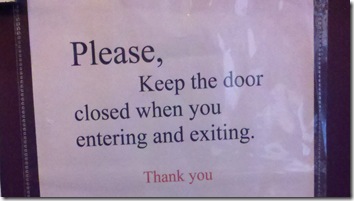There is one timeless question in the world of early stage investing: What does it take to get an investment from a VC firm, or for that matter from a seed or angel investor?
The answer is that you need to score 100 points to get an investor to write a check. The same goes for all kinds of investors: VC's, angels and seed investors – it’s the same 100 point game.
How do you score those 100 points? Well by different kinds of scoring plays… and like a touchdown vs a field goal vs a safety, different plays score different points. (With apologies to my non-US readers for the references to American Football; you should all know that I recently became an American citizen and it is now unconstitutional for me to use cricket metaphors. If I were to risk such a thing we are looking at singles, fours and sixes.)
Usually the plays investors are looking for include a great team, previous successes, excited customers (or prospects), good IP, big market, great product vision, market urgency, etc...
The NFL changes the rules each year, but in the investment game it is worse still. Every investor scores these plays differently and some give you points for things others will not, and each investor scores differently from day to day depending on anything from market conditions, recent portfolio events or what they ate for breakfast. On some days, you get points for the sun shining (good mood), or lose them for the same reason (wish I was at the beach). Perhaps this is the source of the entrepreneurs’ lament: “VCs have deep pockets, but short arms!”
Although you can score 100 points with just one or two things, investors prefer that the points cover multiple facets. Betting everything on the team and the idea means much more scrutiny of both those than if you also had customers, developed product, well known large, growing market, etc.
Point scoring is at best highly variable, and I am sure feels pretty random … those investors sure love to move the goal line. One day an investor will tell you that you need more customers, and when you finally get more customers they tell you the market isn’t big enough. Next day you get lucky and the Wall Street Journal writes about the huge market and the investor wants to dig in to your product source code. Can you ever win those coveted 100 points? And what about the startup with a bad market, no product, no customers and a $9 million investment? How did they score those 100 points? Did they win them at the 15th hole over a wager in a sand trap? Who knows, but they scored 100 points somehow!
The variability in scoring points is what allows you to raise money at all. If all investors were rational and used the same (magical) methodology, only the very few really big deals would get funding at all. Investors would fight tooth and nail to get into those, and nothing else would score point one, or dollar one.
Some observations on why point scoring may be tough… If your start-up requires 15 software engineers, 2 years and $8 million to get to market you will find it harder to score points (although Sigma regularly invests in those kinds of deals). If investors like to invest locally and you are located more than 40 miles away, you will find it harder to score points. If you are in a market with notable failures and no recent successes you will find it harder to score points. If you are making hardware you will find it harder to score points than if you are making software (unless the investor is a hardware nut, in which case, reverse that).
One more thing – you can lose points, too – for example, through incurable inexperience, or perceived arrogance (yes, I know, pretty ironic comment coming from a VC). You should be passionate (+) without being too promotional (-); you should be decisive and show leadership (+) without rejecting all suggestions, coaching and mentoring (-); your projections should show fast growth (+) without showing 80% net margins after 3 years (-).
Smaller investments at the angel and seed stage are similar to VC investments. It’s still 100 points to win, but it is much easier to score those points, because the amount of capital at risk is smaller. For these investors the game is played for a higher risk-reward ratio because they have an even wider portfolio spread (10’s of investments a year, not the 1-2 investments per partner at the multi-million dollar VC level). You could argue that it’s the same scoring rigor, but fewer points needed to win – but point scoring is so random, and 100 is such a nice round number, I prefer to imagine you just score them more easily at the seed stage.
This is not a familiar model to investors (at least not yet – more retweets, please!) … so you can’t ask “how do I score my 100 points round here?” And, as I mentioned, the point scoring one day will change completely the next. So, how do you turn this to your advantage when you are raising money?
Try to identify the universal point scorers in your startup and look for ways to strengthen and leverage them. Take a cold, hard look at the elements of the pitch which don’t resonate, which people seem to ignore during Q&A, and work out if they are helping or hindering. Where are you gaining points, and where are you losing them? Don’t blame the investors for being stupid (though we may be), or capricious (though we are) – such blame becomes bitter one-liners on The Funded. This is the game you have to play, and you need 100 points to win. Don’t blame yourself either – at least not yet – just get back in the game and work at scoring more points.
At best, this provides is a model which describes (but, by definition and unhelpfully, doesn’t predict) investor behavior. In the spirit of “all models are wrong, but some are useful” (George Box) this model doesn’t change the dynamics of raising money, but perhaps it gives you one more way to score a point or two.









